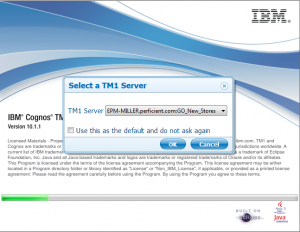Creating a dimension is similar in IBM Cognos TM1 Performance Modeler and IBM Cognos TM1 Perspectives/Architect. However, there are some differences you should be aware of.
Dimension Typing
In Cognos TM1, dimensions can be created either by using the Dimension Editor (right click on Dimensions and select Create New Dimension)…
…or by program code (using the function DimensionCreate).
Either way, you only need to provide a name for your new dimension.
When using Cognos TM1 Performance Modeler, you have the ability to create dimensions of specific types (to fulfill the unique requirements in your model). Supported types include:
- Calculation
- Time
- Version
- Hierarchy and
- Generic
Keep in mind that dimension types are intended to simplify the modeling process and that all of the functionality they provide can be implemented by creating a dimension using Architect or Perspectives (with perhaps some supporting TM1 rules or other scripting).
Here is a brief description of the supported dimension types:
Calculation dimensions
Calculation dimensions can contain formulas (calculations) that perform mathematical and other operations on the data in your cube.
Time dimensions
Time dimensions contain time members, such as financial accounting periods or the dates of sales transactions.
Versions dimensions
Version dimensions contain data from various iterations (versions) of a slice or view of data in your cube.
Hierarchy dimensions
A hierarchy dimension contains a representation of the reporting structure of your data. This dimension can also determine the workflow of your application.
Generic dimensions
Generic dimensions contain general members, such as lists of departments, products, or customers. You should take a note that Generic dimensions can be used when you do not know which type you really need as dimension types can be changed at a later.
Dimension Attributes
One really useful feature Performance Modeler provides is all dimension management can be accomplished in a single window (no need to open separate windows to manage attributes or set element properties).
For those of you who have done your share of modeling, the ability to (right-click) and add a new attribute (and values for the attributes), set weightings, create “Pick Lists” and calculation rules, etc. from a single “view” is simply awesome.
Model on and Enjoy!



